Data shows at least one of two exoplanets studied orbits within the habitable zone of host red dwarf star in system TRAPPIST-1

Space news (the search for Earth 2.0: the first atmospheric study of Earth-sized exoplanets; TRAPPIST-1 system) – searching for possible atmospheres surrounding exoplanets TRAPPIST-1b and TRAPPIST-1c 40 light-years from Earth toward the constellation Aquarius –

Astronomers using the Hubble Space Telescope to search for suitable exoplanets to act as a cradle for a new human genesis recently sampled the atmospheres of two exoplanets orbiting a red dwarf star 40 light-years from Earth. They used Hubble’s Wide Field Camera 3 to observe TRAPPIST-1b and TRAPPIST-1c in near-infrared wavelengths to look for signs of an atmosphere. They discovered these two exoplanets probably don’t have the fluffy, hydrogen-dominated atmospheres found around larger, gaseous exoplanets.
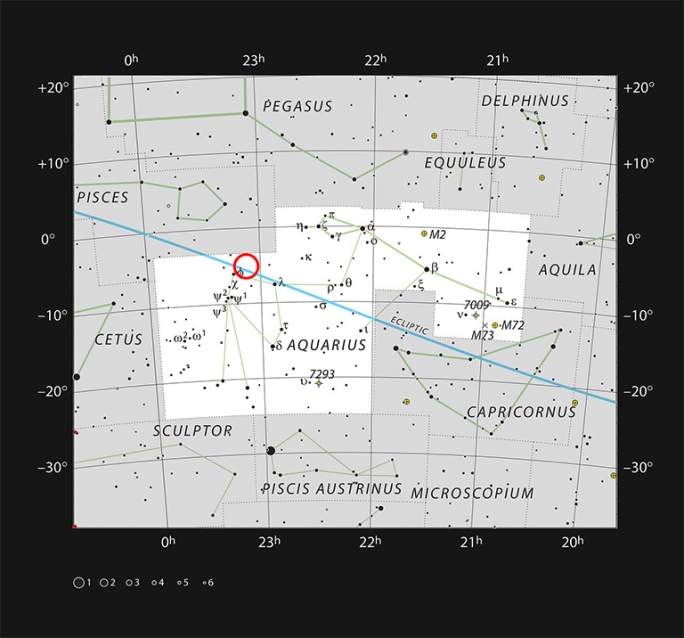
The image seen at the top of the page is an artist’s portrayal of TRAPPIST-1b and 1c, two Earth-sized exoplanets shown passing in front of their host red dwarf star. Astronomers used the Hubble Space Telescope to look for hints of atmospheres surrounding these distant worlds and detected signs increasing the chances of habitability.
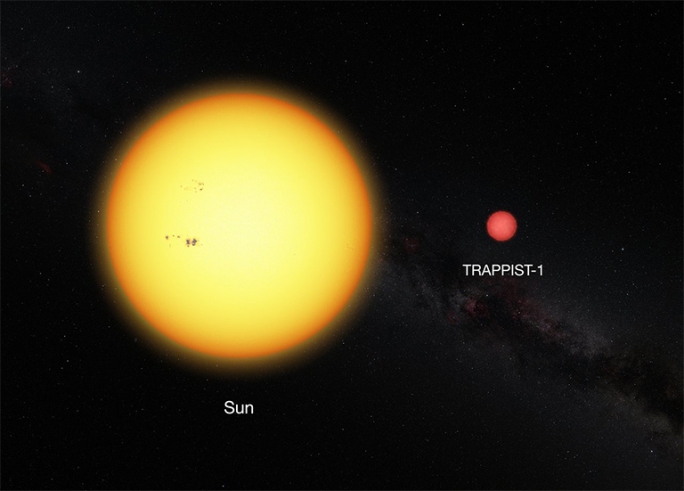
“The lack of a smothering hydrogen-helium envelope increases the chances for habitability on these planets,” said team member Nikole Lewis of the Space Telescope Science Institute (STScI) in Baltimore. “If they had a significant hydrogen-helium envelope, there is no chance that either one of them could potentially support life because the dense atmosphere would act like a greenhouse.”

Julien de Wit of the Massachusetts Institute of Technology in Cambridge and a team of astronomers used spectroscopy to decipher the light, revealing clues to the chemical composition of an atmosphere surrounding these candidates. By taking advantage of a rare double-transit of both exoplanets across the face of their host star, they collected starlight passing through any gas envelope surrounding these exoplanets. This event only occurs every two years, but it allowed for a simultaneous measurement of atmospheric characteristics. The exact composition’s still a mystery at this point, further observations are required to determine more clues. This is an exciting and promising start.
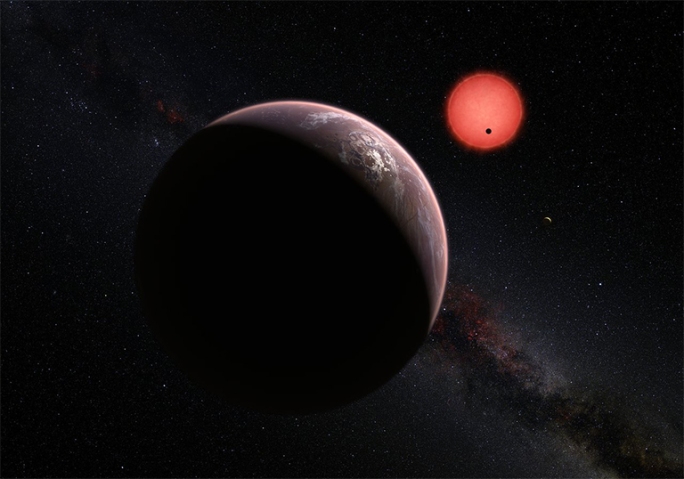
“These initial Hubble observations are a promising first step in learning more about these nearby worlds, whether they could be rocky like Earth, and whether they could sustain life,” says Geoff Yoder, acting associate administrator for NASA’s Science Mission Directorate in Washington. “This is an exciting time for NASA and exoplanet research.”

Estimates put the age of the host red dwarf star at around 500 million years, which is young for a star with a potential lifespan of trillions of years. Red dwarf stars burn a lot cooler, but completely consume their supply of hydrogen, unlike more massive types of stars. The most common star in the cosmos, astronomers think 20 out of 30 near-Earth suns could be red dwarfs. The numbers indicate searching nearby red dwarfs for an exoplanet with the right ingredients for habitability is a good place to begin our search.
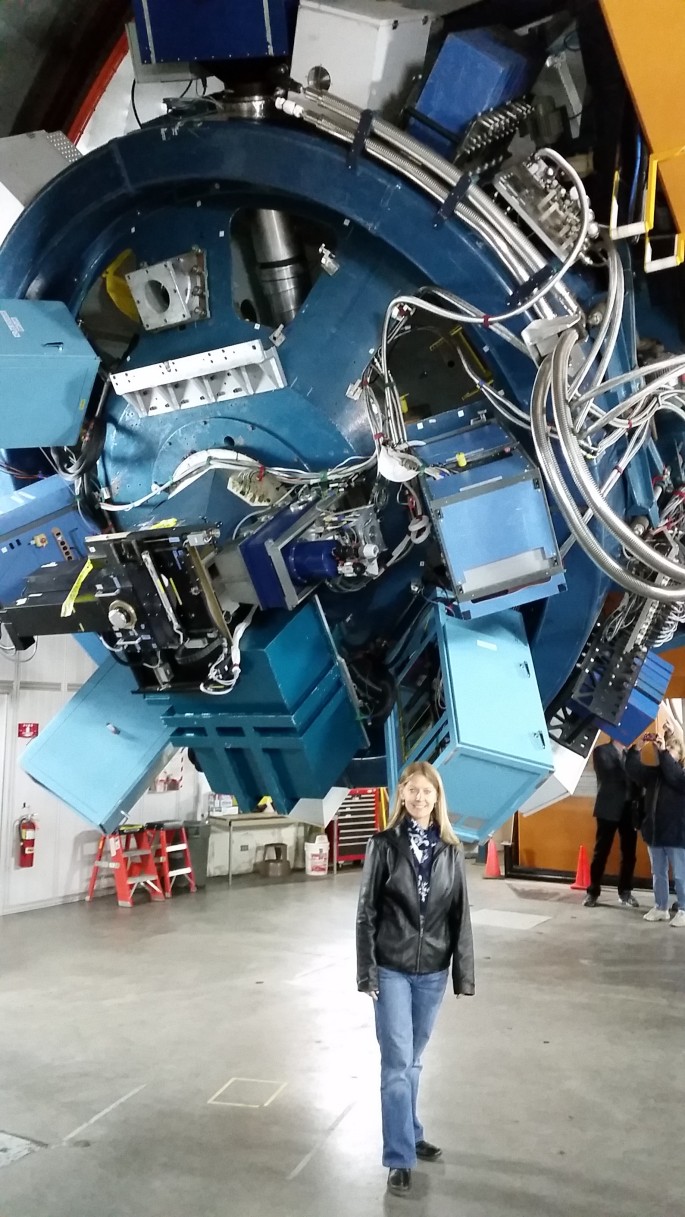
The team and other astronomers plan on making follow-up measurements of these two exoplanets using the Hubble Space Telescope, the Kepler Space Telescope, the TRAPPIST telescope at ESO’s La Silla Observatory, and other assets to look for thinner gas layers containing heavier atoms than hydrogen as in Earth’s atmosphere.
“With more data, we could perhaps detect methane or see water features in the atmospheres, which would give us estimates of the depth of the atmospheres,” said Hannah Wakeford, the paper’s second author, at NASA’s Goddard Space Flight Center in Greenbelt, Maryland.
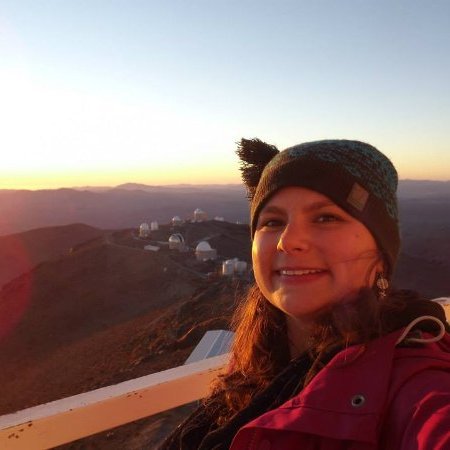
Toward the future
In the years ahead, using assets like NASA’s James Webb Space Telescope, astronomers should be able to determine the exact composition of any atmospheres surrounding these exoplanets and others. Finding the signatures of water vapor and methane, or even carbon dioxide and ozone is a significant step toward possible habitability for lifeforms. The power of Webb should also allow planetary scientists to measure the surface and atmospheric temperature and pressure of each exoplanet. Both key factors to determining if these exoplanets orbiting red dwarf TRAPPIST-1 are possible cradles for the genesis of life.
“Thanks to several giant telescopes currently under construction, including ESO’s E-ELT and the NASA/ESA/CSA James Webb Space Telescope due to launch for 2018, we will soon be able to study the atmospheric composition of these planets and to explore them first for water, then for traces of biological activity. That’s a giant step in the search for life in the Universe,” says Julien de Wit.

“These Earth-sized planets are the first worlds that astronomers can study in detail with current and planned telescopes to determine whether they are suitable for life,” said de Wit. “Hubble has the facility to play the central atmospheric pre-screening role to tell astronomers which of these Earth-sized planets are prime candidates for more detailed study with the Webb telescope.”
Read about a recent discovery about supermassive black holes changing current theories.
Read and learn about the new space technology being developed.
Read about the first observation of a supernova shockwave.
Read the official study here.
Check out NASA’s interactive exploration of the Exoplanet Zoo.
Learn more about NASA’s plans for the James Webb Space Telescope.
Take the space journey of NASA here.
Discover the Hubble Space Telescope.
Read more about NASA’s plans for K2.
Voyage across the cosmos on board the telescopes of the ESA here.
Learn more about astronomy at the Massachusetts Institute of Technology.
Read and learn more about TRAPPIST-1 and its planets here.
Learn more about plans for the ESA’s E-ELT.
Discover more about the work of NASA’s Space Telescope Science Institute here.
Learn about the outstanding work being done by NASA’s Science Mission Directorate.
Take a tour of NASA’s Goddard Space Flight Center here.
